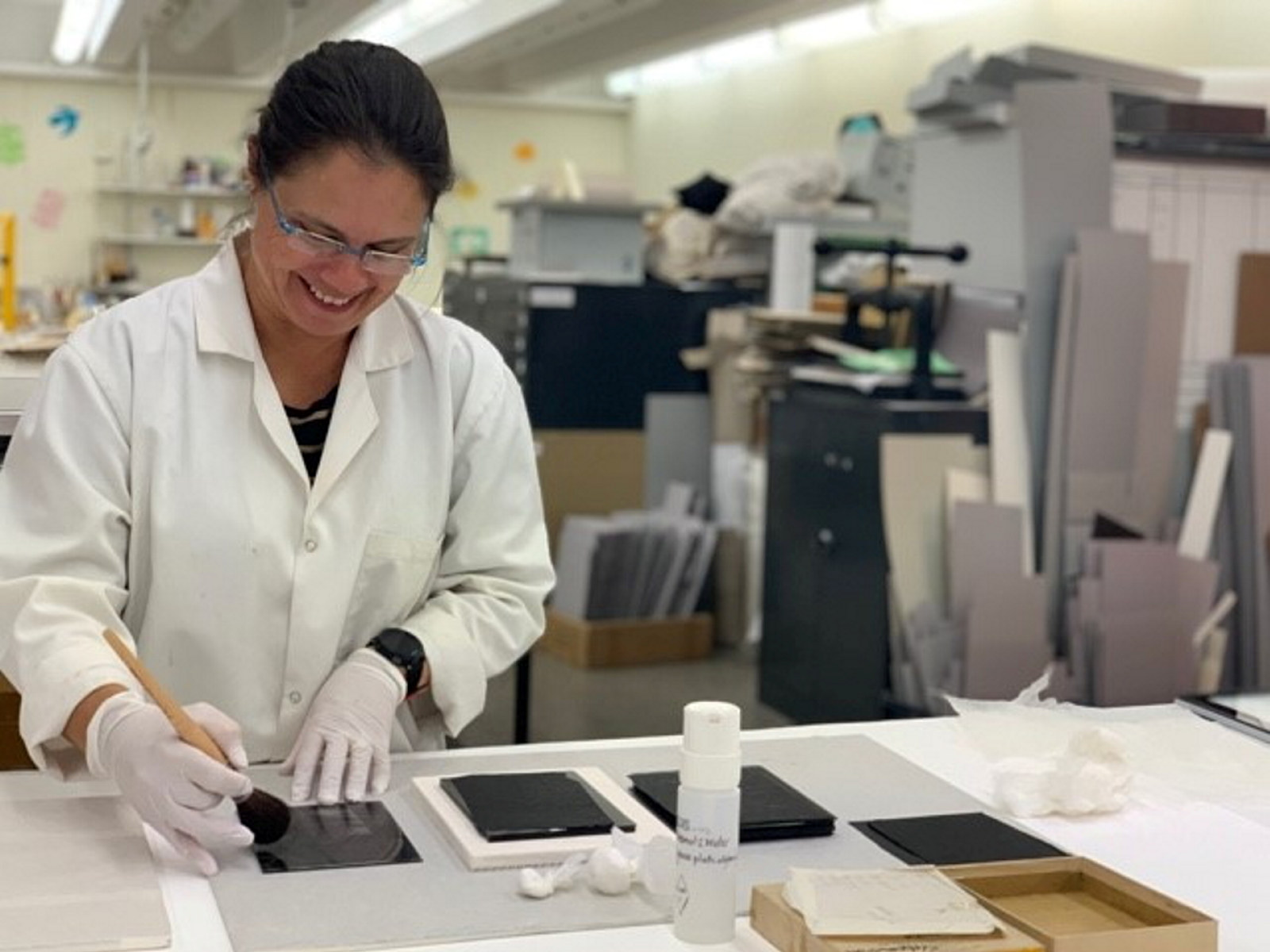Conservation treatments
State archives that are damaged
When State archives that are damaged are requested by a reader, to view in the reading room, they are assessed and treated by our conservators. Damage may have been caused by poor storage practices, unfortunate disasters, or bad handling in the past.
We refer to these archives as being “Too fragile to issue” and these archives cannot be accessed either by staff or readers until they have been treated by Conservation.
The State archives most commonly in this category are:
- Insolvency records (many files have been damaged by flood water and mould. The paper has become pulpy and weak, and pages have stuck together making access without conservation treatment impossible)
- Probate records (a proportion of records have been eaten by insects and damaged by mould. They have areas of loss and the pages are often stuck together with insect debris)
- Divorce records
- Equity records (many of these parchment documents have been damaged by flood water. Contact with water has caused the parchment to stick together, shrink and become discoloured. Many of them also have physical damage from poor storage)
- State Rail rolled plans (large plans are very difficult to store and handle without causing damage. Plans are often amongst the most highly used documents in Agencies which can result in severe physical damage)
- Parchment documents
Conservation treatments can take a long time to complete. They often require processes that take hours if not days – for example the simple act of pressing a paper document to safely flatten it may take a week or more. Removing old sticky tape with solvents can be both hazardous and time consuming. Treating mould damaged documents is also hazardous and must be done in a fume hood.
When you request a damaged archive it is placed in a queue awaiting treatment. We make every attempt to get through requests quickly, and try to fit simple treatments into lulls in other treatment cycles, however due to the length of many treatments and the number in the queue ahead of you, it may take some time to get to your archive.
The role of Preservation
Preservation describes a group of activities intended to ensure that State archives survive for as long as possible.
Archives that are allowed to deteriorate or become damaged will become difficult to access and only effective preservation strategies will protect them from this fate.
In practice much of what constitutes preservation is actually commonsense, and if implemented will save money, time and resources in the long run.
Preventive vs. Remedial Conservation
Preservation has two main arms or sub-groups:
Preventive conservation involves holistic strategies to stop damage and deterioration
- Taking care of the big picture
- Optimum controlled environment
- Control and mitigation of risks, e.g. disaster planning
- Best quality materials storing and creating archives
- Good handling and use procedures
- Preservation copying
Remedial conservation involves intervention to repair damage or counteract deterioration
- Specific treatments, such as repair, cleaning or the removal of damaging elements, such as rusty paper clips or mould
Repairing damaged paper documents
Rough handling and poor storage often results in documents being torn. It is common for these documents to have then been repaired with unsuitable materials such as sticky tape or tar-backed paper tape.
Conservators remove the old repairs, clean the document and then repair the tears with suitable materials such as Japanese tissue and wheat starch paste.
Flattening parchment documents
Parchment is made from chemically treated and stretched animal skin and when it comes into contact with water it shrinks, blocks together and becomes discoloured. Conservators use techniques similar to how the parchment was created to flatten and repair it.
This Primary Application Packet is severely desiccated and shrunken. It was softened with solutions of alcohol and water and then softened in a humidity chamber so that it could be unstuck and stretched flat.
Divorce records often have paper and parchment documents interleaved together. When they are damaged by water the parchment sticks to all the other documents and makes a rigid block. Conservators brush on alcohol and water solutions to separate the bundles and then stretch the parchment and repair the paper documents

Archives behind the scenes - unboxing a glass plate negative
In this episode we visit the Conservation Lab where Elizabeth shows us how to unbox glass plate negatives - very gently!